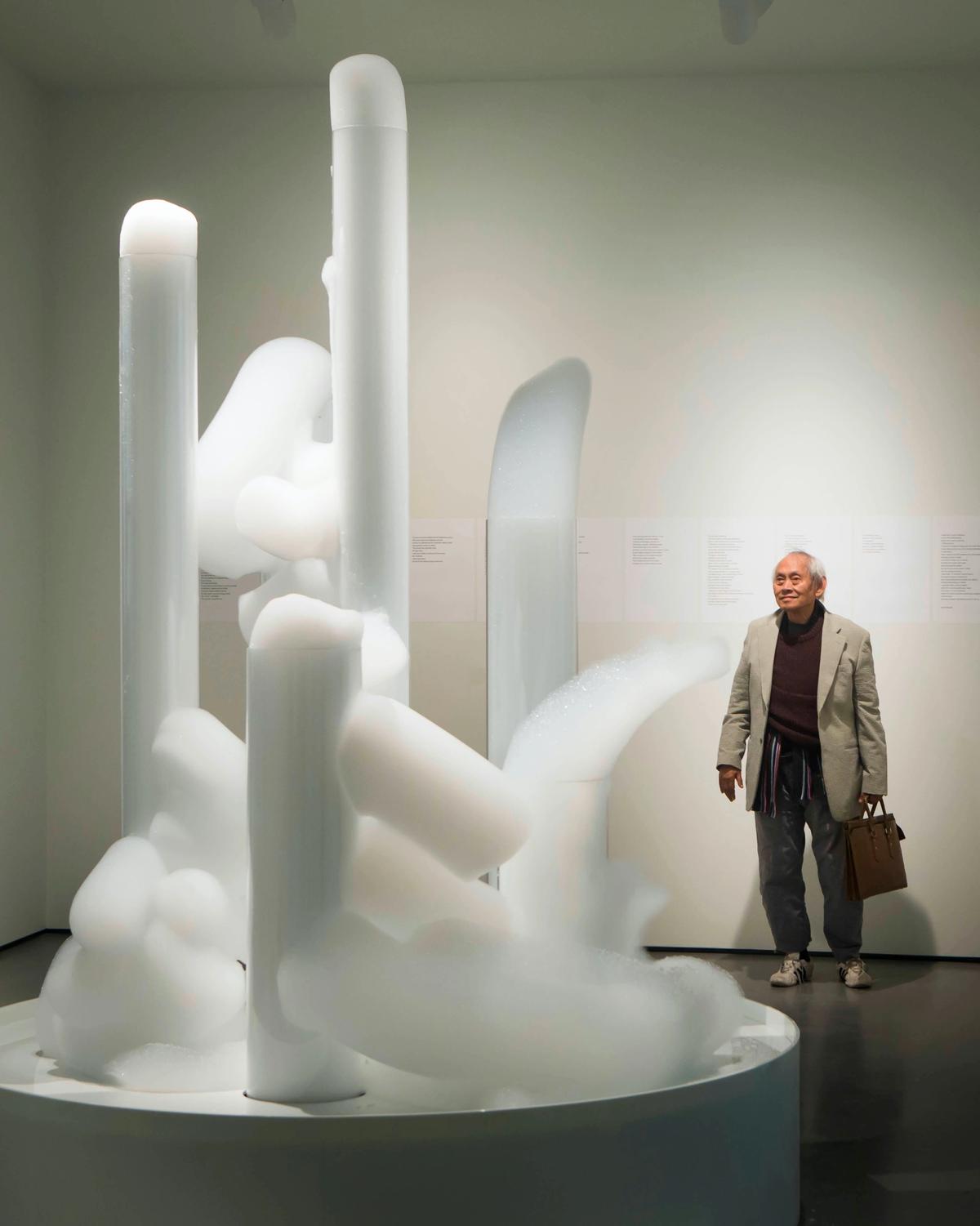Filipino artist David Medalla, who once described himself as a “poet who celebrates physics”, has died at the age of 82. Medalla’s partner and collaborator, Adam Nankervis, confirmed his death in a Facebook post, saying that many artists were “inspired by his genius as an artist, poet, activist, wit, philosopher and raconteur”.
Curators at the Queensland Art Gallery/Gallery of Modern Art in Brisbane say online that “Medalla’s unpredictable and playful approach to art-making has made him difficult to categorise, but he is increasingly recognised as a significant figure in the development of installation, kinetic and participatory art.”
The artist is known for his “auto-creative” Cloud Canyons sculptures—organic, shifting foam sculptures begun in the 1960s—which are cited as key examples of kinetic art. Marcel Duchamp even created Medallic Sculpture in 1968 as a tribute to Medalla and his bubble machines.
Tate in London owns Cloud Canyons No. 3: An Ensemble of Bubble Machines (Auto Creative Sculptures), one of the earliest bubble machines made in 1961. Its display caption reads: “The streams of bubbles evoke cells yet also embody the ephemeral, hovering between a material presence and an immaterial nothingness.”
In 2016, Medalla exhibited his signature foam-producing sculptures at Hepworth Wakefield gallery in West Yorkshire when he was nominated for the inaugural Hepworth Prize for Sculpture. Andrew Bonacina, chief curator at Hepworth Wakefield, wrote on Instagram that Medalla was a “fount of knowledge, wisdom… and a brilliant, completely unique artist”.
In an interview with Nankervis, published in Mousse magazine in 2011, Medalla explained the genesis of the bubble machines, saying: “All my work is informed by personal experience. It is the seed to which I apply a transcendent dialogue. The idea for my first bubble machine was rooted in a complex combination of many memories. During the Second World War, I was in my sister’s arms when I saw a young Filipino guerrilla shot by a Japanese soldier. The young guerrilla ran into our garden. The sight of him lying there dying, red blood bubbles foaming from his mouth, made a strong impression on me.”
Medalla was born in Manila in the Phillippines in 1938, and enrolled at a very young age—reportedly around 12—at Columbia University in New York where he studied ancient Greek drama and modern literature. He relocated to Paris where he showed his first bubble machine to the French philosopher Gaston Bachelard in 1963, according to Mousse.
His career then flourished in London where Medalla co-founded Signals Gallery along with artists Gustav Metzger and Marcello Salvadori. The gallery, which presented international kinetic art, had a huge impact on the city’s avant-garde art scene. In 2018, Thomas Dane Gallery in London and Kurimanzutto gallery in New Mexico co-organised Signals: If You Like I Shall Grow which brought together the works of Medalla, Metzger and Salvadori.
Kurimanzutto wrote at the time: “Celebrated internationally for its ground-breaking series of solo exhibitions, by artists including Lygia Clark, Jesus Rafael Soto, and Mira Schendel, Signals London also used group exhibitions as a device for creating aesthetic relationships between the diverse national and international avant-garde networks orbiting its founders.”
Crucially, Medalla’s work was included in curator Harald Szeemann's exhibition 'Weiss auf Weiss' (1966) and 'Live in Your Head: When Attitudes Become Form' at the Kunsthalle Bern (1969), and also in the Documenta 5 exhibition in 1972 in Kassel.
Biennial curators today have also reassessed his canon. Medalla’s work was included in the 2017 Venice Biennale curated by Christine Macel of the Centre Pompidou. “[She] did a really good job in challenging some of the gender stereotypes around textiles, and in this context I loved David Medalla’s piece in the Arsenale [A Stitch in Time, 1968-2017]—in the melee of Venice it was lovely to have something that rooted you to a moment of reflection,” Maria Balshaw, Tate director, said.
UPDATE: This article was amended to include Medalla's correct age on his death (82).


